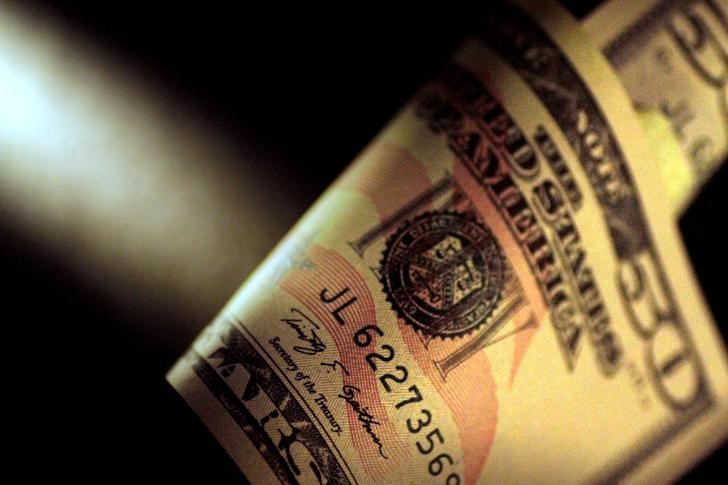By Peter Nurse
Investing.com -- The dollar edged higher in early European trade Wednesday, but remained near a one-week low as confidence rises that the new surge in Covid-19 cases will have a limited impact on the global recovery.
At 2:50 AM ET (0650 GMT), the Dollar Index, which tracks the greenback against a basket of six other currencies, traded 0.1% higher at 92.993, after falling as low as 92.804 on Tuesday for the first time since Aug. 17.
EUR/USD edged 0.1% lower to 1.1743, after climbing a one-week high of 1.1765 overnight, USD/JPY was up 0.1% at 109.70, GBP/USD fell 0.1% to 1.3720, and the risk sensitive AUD/USD dropped 0.2% to 0.7243, after climbing to 0.7271 on Tuesday, also a one-week high.
The dollar has been struggling over the last couple of days with optimism rising over the ability of the U.S. to cope with the recent surge in Covid-19 cases after the U.S. Food and Drug Administration granted full approval to the vaccine developed by Pfizer (NYSE:PFE) and BioNTech.
Additionally, the Meishan terminal at China’s second-busiest port reopened Wednesday following a two-week Covid-induced shutdown, increasing confidence that the world’s second largest economy has managed to control its coronavirus outbreak.
The main focus this week, though, has been the Federal Reserve’s Jackson Hole Symposium, and with the Covid outbreak clouding the outlook, expectations have dropped that Fed Chair Jerome Powell will indicate a timeline for the tapering of the central bank’s massive bond-buying program.
“This week the pendulum has swung pro-risk, but we suspect investors will be reluctant to chase the dollar a lot lower before Jerome Powell's speech this Friday,” said analysts at ING, in a note.
Elsewhere, USD/HUF rose 0.2% to 296.53 and EUR/HUF climbed 0.1% to 348.14, with the Hungarian forint handed back some of Tuesday’s gains after the country’s central bank raised its benchmark interest rate by 30 basis points to 1.5%, the third such hike in as many months.
Hungarian policy makers have indicated they’ll keep up the tightening cycle until inflation is on track to hit the central bank’s 3% target over the monetary horizon.
